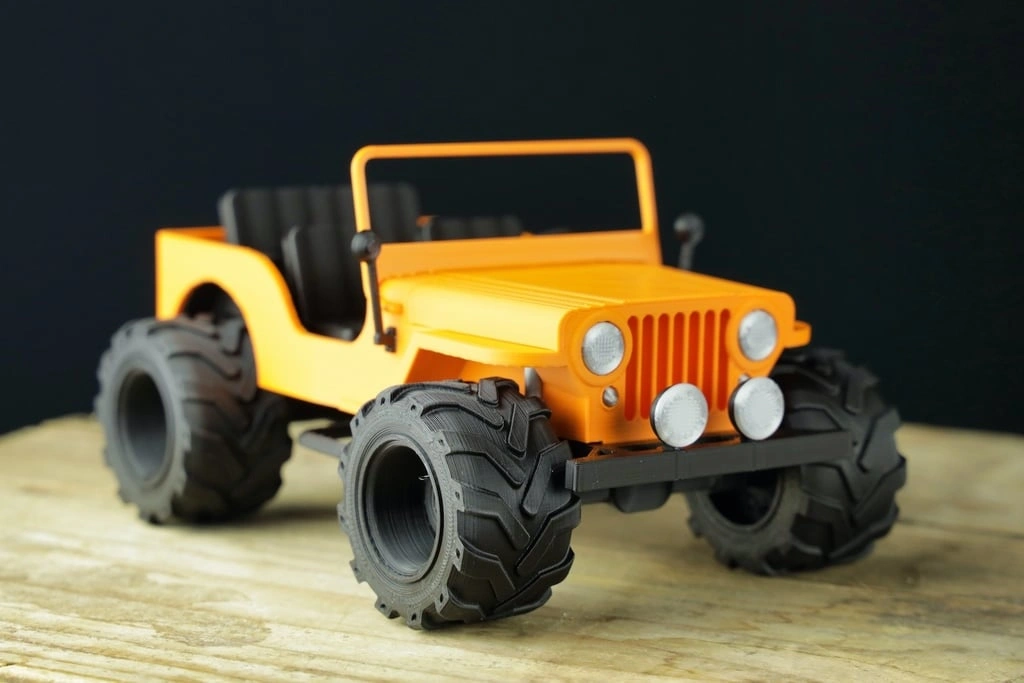3D Print with ABS: 5 Tips for Perfect Prints
Aug 10,2023 | 3D4Create
Introduction to ABS
ABS (Acrylonitrile Butadiene Styrene) is a popular material for 3D printing strong, durable parts and prototypes. Compared to PLA, some key advantages of ABS include:
- Higher temperature resistance up to 80-100°C—ideal for mechanical parts and enclosures.
- Increased tensile strength and impact resistance allows ABS to withstand higher stresses.
- More rigid material with less tendency to warp or bend under loads.
- The ability to smooth and chemically weld layers allows for achieving glossy, gap-free professional finishes.
ABS is commonly used for functional parts like robotics components, vacuum forms, durable housings, assembly jigs, and end-use production parts. The material also works very well for toys, decorative pieces, concept models, and prototyping.
With some tuning of settings and environment, ABS can produce accurate and robust 3D-printed parts. Follow these tips for optimal print quality with ABS filament.
Dial In Your Printer For ABS Filament
- Enclosure - An enclosed printer is highly recommended for ABS to prevent warping and shrinkage by keeping ambient temperatures stable. Prevent drafts and excess airflow.
- Nozzle Temp - Print in the 220-260°C range for proper extrusion flow and good layer-to-layer adhesion. Too cold causes clog.
- Bed Temp - Heat bed to 95-110°C to prevent warping by reducing shrinkage stresses. This improves first-layer hold and bed adhesion.
- Cooling - Cooling fans can be used to improve bridging but avoid too much fan on small lower layers. Slow speeds are better for adhesion.
Tune Your Slicer Settings For ABS Filament
- Width/Height - A 0.4mm nozzle can reliably print at 0.38-0.5mm extrusion width and 0.1-0.3mm layer height. Smaller layers improve resolution.
- Print Speed - 30-60mm/sec works well for ABS. Slow down for small layers, fine details, bridges, and straight vertical walls to prevent defects.
- Acceleration - Limit acceleration to <3000mm/sec2 to reduce ghosting, ringing, and other artifacts in prints with fast moves or direction changes.
- Infill - 15-40% infill provides a good balance of print strength vs time. Higher infill adds robustness for high-stress components.
- Pattern - Rectilinear or honeycomb infill patterns produce the best strength properties for ABS 3D-printed parts.
Prepare Your Print Surface For ABS Filament
Proper bed adhesion helps ABS prints tremendously. Good bed materials and preparations include:
- PEI sheets offer excellent hold once roughened slightly with fine sandpaper for grip. One of the best ABS bed surfaces.
- Blue painter's tape provides nice adhesion when replaced frequently and pressed down firmly to avoid bubbles.
- Glue stick, hairspray, or dedicated ABS slurry help the first layer hold better to the bed and prevent warping.
- Kapton tape on the glass works well. ABS/acetone slurry creates a glossy surface for a smooth bottom finish.

Use blue painter's tape on the print bed to improve first-layer adhesion(photo: 3dprintingpc)
Optimize Environment For ABS Filament
The environment is key to ABS's success:
- Dry filament for 4-8 hours at 80°C before printing if exposed to high humidity and popping/cracking is observed.
- Print in a room with an ambient temperature of around 20-25°C. Avoid drafty areas.
- Ventilate fumes from printing heated ABS and have active filtration for the vapors.

SUNLU S2 3D Printing Filament Dryer Box
Post-Processing ABS Prints
To finish ABS parts:
- Acetone vapor baths smooth layer lines for a glossy, gap-free professional appearance. Use proper safety precautions.
- Light sanding post-print cleans up the surface and prepares it for painting, priming, and other finishing steps.
- Primers, paints, clear coats, and rubberized dip coatings allow creative enhancements.
- Drill, tap, and thread ABS prints as needed for inserting screws, bolts, brass inserts, and other hardware.

ABS 3D Printing Filament (photo: MatterHackers)
Conclusion
With the right techniques, ABS can produce durable, accurate 3D-printed parts perfect for functional components. Follow these tips to dial-in temperatures, bed adhesion, enclosures, and slicer settings for clean, consistent prints with ABS filament. Let me know if you have any other questions!
See Also:
ABS Filament: How to Print Safely?
Unclogging 3D Printer Nozzles: Most Practical Guide
Getting the Best Results: Optimal 3D Printing Temperatures for PLA, ABS, PETG, TPU, Nylon


